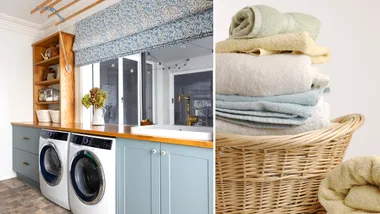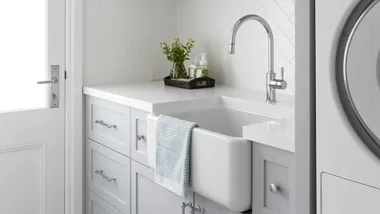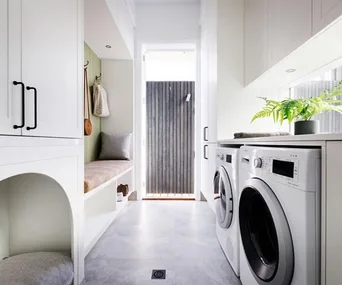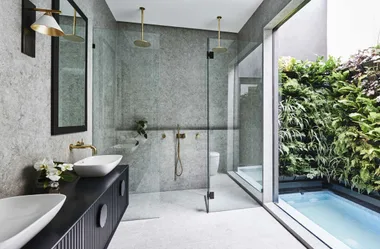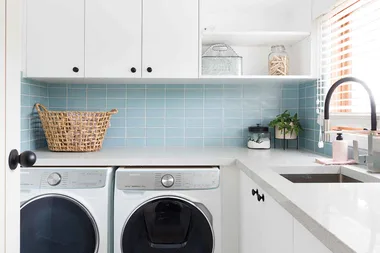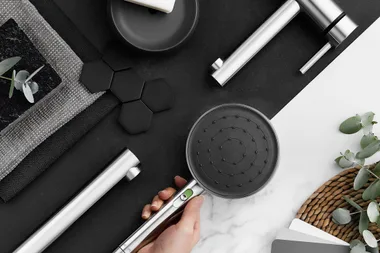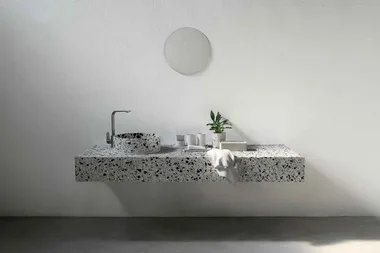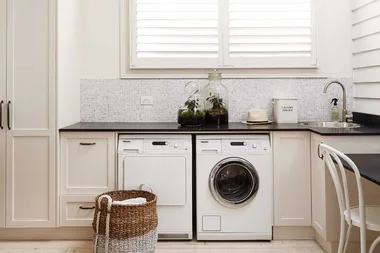Really, a dream laundry is a place where someone else does all the work. Wishing aside, it pays to look for shortcuts to lighten the load, and thankfully technology offers many.
Washing machines
The latest washing machines not only have a mind of their own, they also blend in with the crowd. When shopping around, look for smart pre-wash settings along with sensitive ‘hand-washing’ cycles and automatic stain-removal cycles (yes, they promise we’ll never be scrubbing out grass stains again!). This sensor technology has been adopted by many of the major brands to scan and ‘read’ how the washing is going and adjust rinses and actions accordingly, which is brilliant news for our water and energy bills. Stick to four-and-a-half- or five-star models for high efficiency.
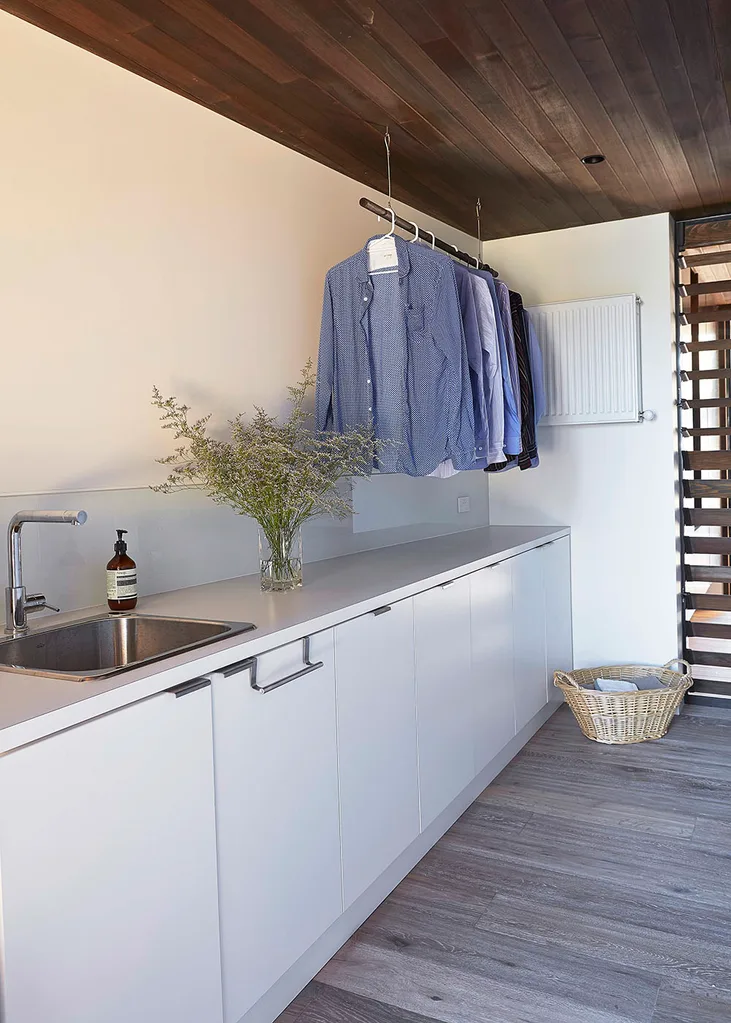
Design Dynamics
Make your laundry time a fuss-free experience by zoning storage around your activities. “Try to include plenty of bench space for folding clean clothes, dumping dirty clothes or to place baskets of washing,” says stylist Simone Barter from StyleLifeHome. If you can, elevate appliances so a basket can sit below or hide in a cupboard alongside. If this is also where dirty clothes live, you can include separate pull-out hampers for ‘whites’ and ‘colours’. Simone recommends leaving an open shelf for potted plants or objects to prevent it feeling like a stark, functional space.
Clothes conscious
Want to preserve your garments? Think about using a chemical- or filler-free detergent. While laundry detergents make your clothes smell nice and fresh, most – even eco brands – are packed with ‘fillers’, which takes no part in the washing action. It’s these unnecessary chemicals that can also irritate allergy sufferers. Norwex, Tangent GC or Kin Kin Naturals are good alternatives. “Read the labels on your garments,” advises designer Siobhan Glass from Miss Glass Home. “Taking the time to read the instructions will prolong the life of your clothes.”
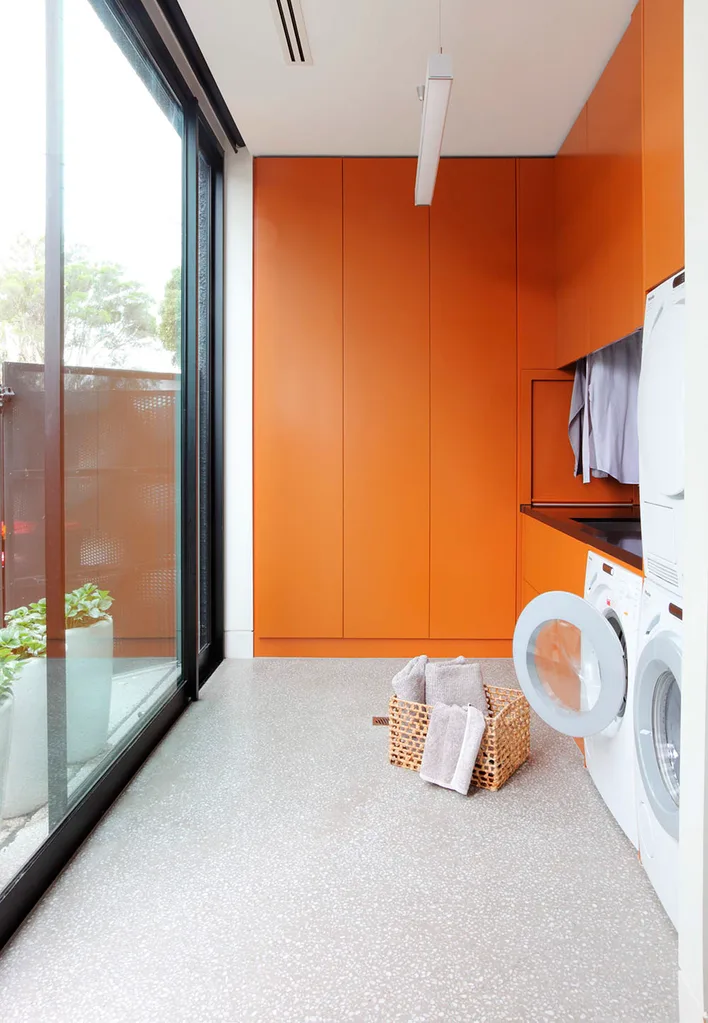
Drying
Where possible, fresh air is best. “Air drying is natural, eco-friendly and good for your clothes,” Siobhan says. “Clothing that’s been air-dried won’t wear as easily from the constant rubbing from an electric dryer and is also less vulnerable to shrinking.”
Design dynamics
Alongside a new dryer, include space for fold-away drying racks or a ceiling-mounted hanging rod. For compact drying, consider Ikea’s ‘Grundtal’ wall-fixable drying rack – perfect for hanging after ironing or to dry delicates – or look for a standalone foldable version that you can store away when not in use.

What’s new?
New dryers equipped with 3D sensors and heat pumps now mean you can get the job done faster, using far less energy than before. Hunt for dryers that scan the load to judge the amount of water present, and then work out drying time accordingly. Technology is moving fast: LG’s latest dryers let you use a phone app to diagnose any problems, with the appliances offering solutions to fix themselves.
Energy ratings
Energy labels – those yellow and red stickers you see on many appliances – provide consumers with information on the energy efficiency of a product. Available in six-star and 10-star versions, the labels display two key figures: energy consumption (kilowatts per year) and energy efficiency (in stars). The more stars, the more savings. Visit energyrating.gov.au.
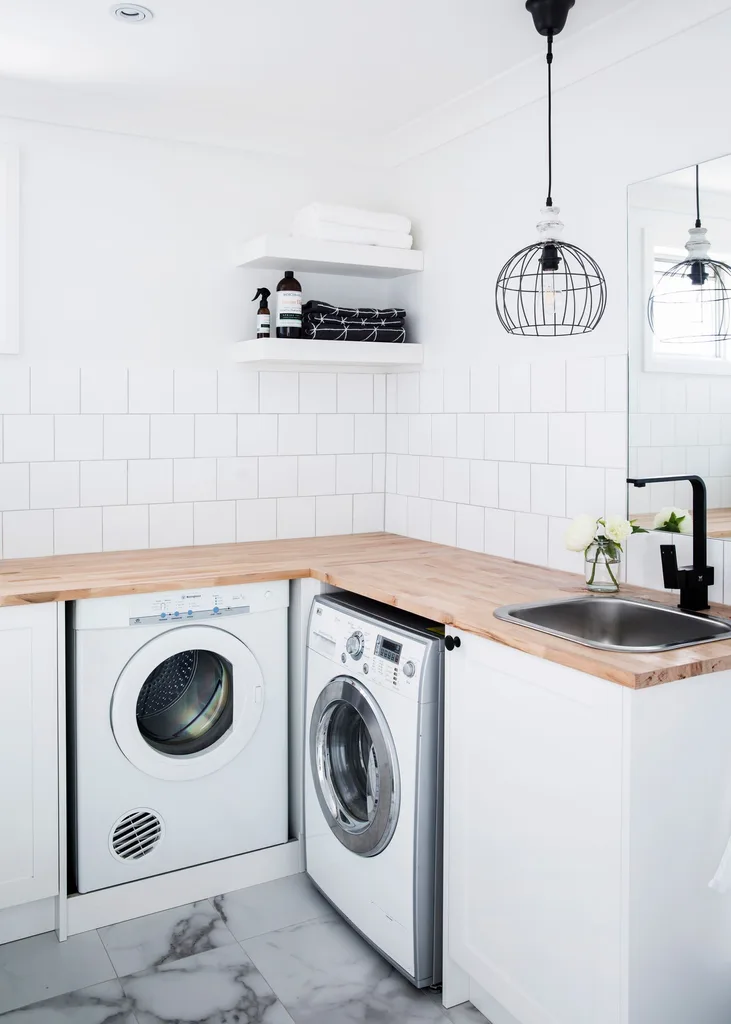
Ironing
You’d be hard-pressed to find someone who likes ironing. The big brands know this and are attacking this dislike on two fronts, by revamping the iron and introducing garment steamers – a mainstay of stylists for years – for home use. The new steamers, which use steam to freshen up clothes and remove wrinkles (no ironing board required), are terrific. The only downside is that, without the pressure of an ironing plate, you can’t achieve sharp pleats or stiff collars. Meanwhile, new irons are also making the process faster. The latest ones have improved glide and cut down on water refills.
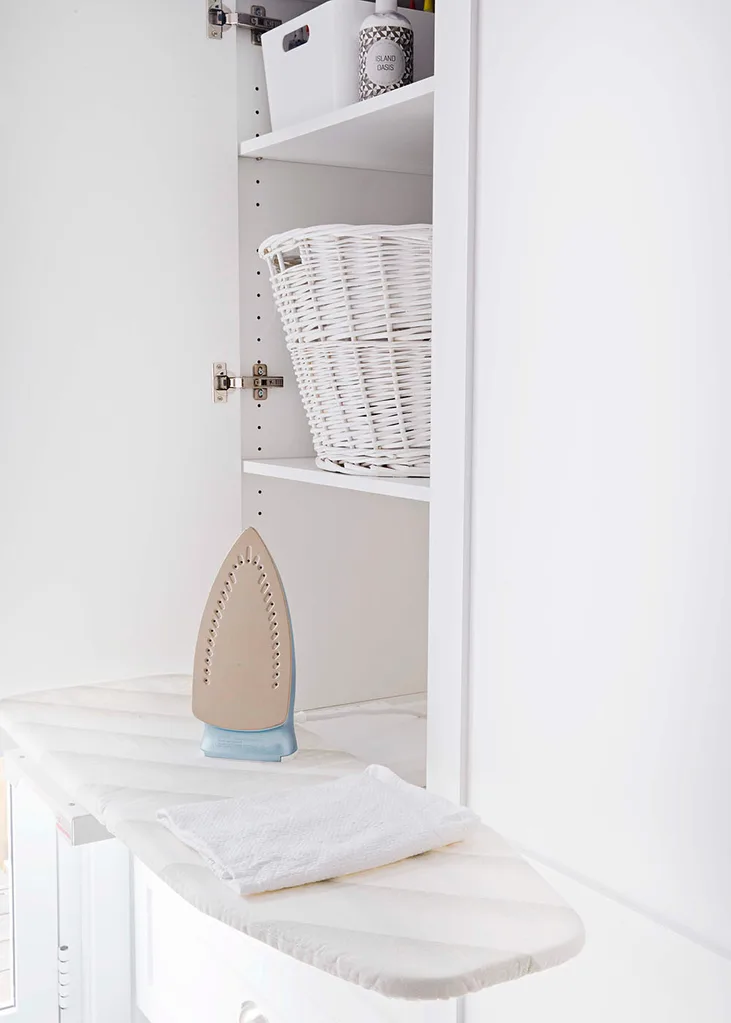
Smooth operators
Spray stubborn fabrics with a little water. “The moisture works to achieve smoother results,” says Kambrook’s Nancy Humphreys. A planned approach can also help. “Rather than ironing clothes on an ad hoc basis, consider working in batches to save set-up time,” she says.
Design dynamics
An ironing board isn’t something you want lying around taking up valuable floor space. If possible, design an area inside cabinets to store it neatly, but also plot out where you’ll use it and position powerpoints accordingly. Check out Hafele’s innovative ironing board storage solutions: fold and pull directly from behind a drawer front, have it wall-mounted, or fold out and use as a lateral board (right). There are also cabinets available at hardware stores with mirror fronts that hide a fold-out ironing board inside. The interior of large cupboard doors can also be fitted with hooks to hang ironing boards and cleaning accessories.
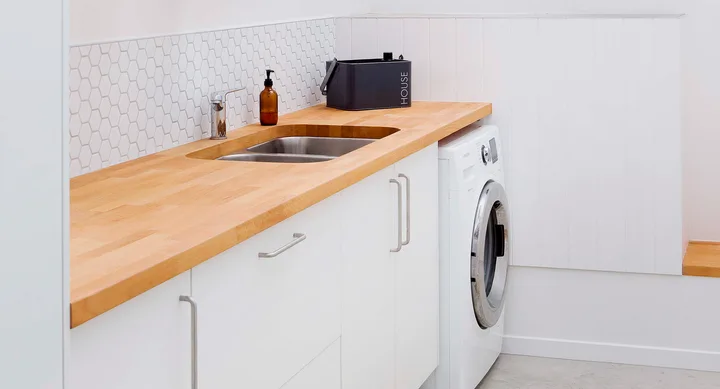 John Downs
John Downs
